Heritage Trees of Ireland
Recording & mapping important Irish trees
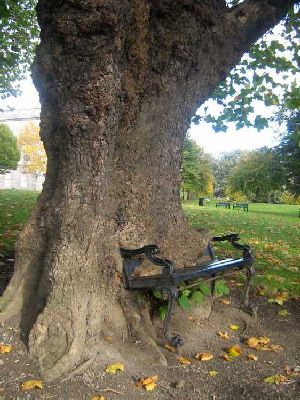
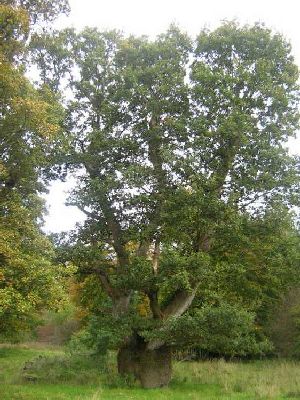
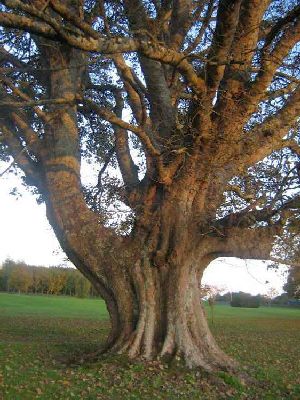
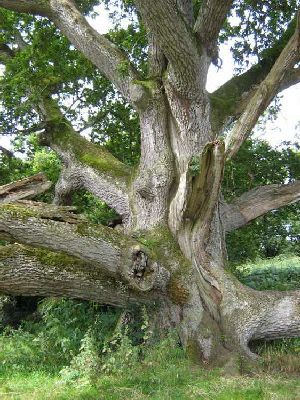

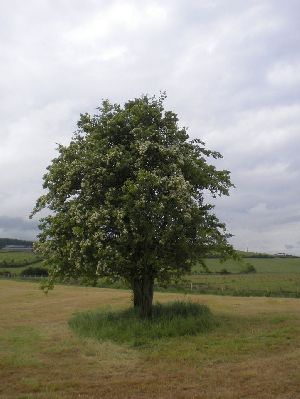

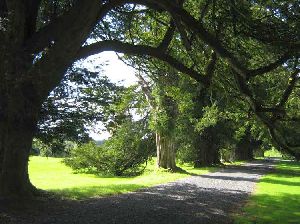
The ‘Heritage Trees of Ireland’ project is an initiative which aims to record and map Irish trees with biological, cultural, ecological or historical interest throughout the island of Ireland. The search for Irish heritage trees began in 2009 and already more than 800 records have been collected which are deemed to be of interest. The project is led by the Tree Council of Ireland, in association with the Irish Tree Society and Crann, and is part-funded by the Heritage Council.
You can see the results of the survey at www.treecouncil.ie or via the website of the National Biodiversity Data Centre at http://www.biodiversityireland.ie/ .
Trees are part of our identity
Our heritage trees are among the oldest living objects in the country and, as such, are an integral and valuable part of our natural and cultural landscape. When we look at our history, our literature and poetry, our music and art, we find trees as part and parcel of our identity and expression. As well as the “living history” they represent, old trees and ancient woodlands have a high biodiversity and conservation value as they support a complex web of plants and animals and are unique in the quantity and variety of life they sustain, above and below ground.
We are all the guardians of our significant and special trees
Heritage trees are found anywhere and everywhere: in our native woodlands, historic parklands and estates, in association with human settlement, in hedgerows, along roadsides, in agricultural fields and occasionally as isolated specimens in the middle of housing estates or development sites. Heritage trees are often all that remains as a legacy of some of our most historic landscapes. They survive today because of their historical connections, aesthetic appeal, their ecological or botanical significance or simply because they are hidden away. In some areas, local taboos and lore, passed on from one generation to the next has ensured the protection of certain trees: nobody would dare damage them because they respected them and feared some misfortune if they interfered with the trees. Some of our heritage trees are, however, endangered either through neglect or lack of knowledge. Many more have been lost or felled to make room for development, intensive agriculture and forestry or for misguided safety reasons. Mapping and collecting data on this unique natural asset is a crucial first step towards a more enlightened approach to our remarkable treescape. We are all the guardians of our significant and special trees with a duty on us to plan for their conservation and management into the future for generations to come.
All sorts of trees qualify for inclusion
The Heritage Trees project aims to identify our ancient trees and by doing so ensure that they are protected and cared for and that they survive for as long as possible. Trees of interest include giant, important, mysterious, sacred, historical, fabulous, bizarre-looking or ancient trees, and generally trees with a story. There are all sorts of trees that qualify for inclusion such as rag trees; hanging trees; landmark trees; military trees (planted in military formation to commemorate battles); those of exceptional girth, height or age; any associated with historical events, people or structures; and those which are important to a community.
Heritage Tree Specimens
Two of the best known examples of Heritage Trees in Ireland are the ‘Hungry’ Tree at King’s Inns, Dublin, which is a London plane that appears to be consuming a bench, and Lady Gregory’s ‘Autograph’ Tree at Coole Park, South Galway, a copper beech which has been signed by WB Yeats, his brother Jack, George Bernard Shaw, John Masefield, Sean O’Casey and other famous people.
The mighty King Oak in Charleville Estate in Tullamore, County Offaly is another example of a heritage tree. It is a pedunculate oak and old trees in woods local to the King Oak have been ring counted at around 450 years old. Tradition holds that when a member of the Hutton-Bury family dies, a major branch falls from the tree.
It is preserved with religious veneration by the peasantry
One of the most famous ancient trees in Ireland is the Muckross Friary Yew which stands in the centre of the cloisters of the ruined Muckross Friary in Killarney, County Kerry. An account in the Dublin Penny Journal (ANON, 1833) stated: ‘The stem of this remarkable tree, which there is no reason to doubt is coeval with the Abbey, is upwards of twelve feet in height, and about six feet six inches in circumference. It is preserved with religious veneration by the peasantry; and so awful is the effect produced on the mind by its extraordinary canopy, that many persons shrink back with terror on entering within its precincts, and few can remain long without feeling an impatient desire to escape from its oppressive influence.’
Reputed to be the oldest Sycamore in Co Mayo
Not all heritage trees are so dramatic. Some trees may be outstanding simply because they are of a great age or are exceptional examples of their species. On Ballinrobe Golf Course, near to the 18th hole, there is a massive specimen of sycamore, Acer pseudoplatanus. Reputed to be the oldest sycamore in County Mayo, it is a particularly impressive example of the species with a height of 20m and girth of 6.23m. One of the finest ancient sycamore trees in the country grows at Druids Glen. Estimated to be up to 300 years old, it measures 24m high and has a girth of 7.39m. An equally fine sycamore with a massive stem and crown occurs at Headfort Golf Course in Co. Meath. Indeed some of the finest specimen trees in the country can be found at Headfort which is renowned for its magnificent and botanically interesting collection of mature trees. Here, the trees are obviously valued and very well cared for and have been cleverly incorporated to enhance the picturesque parkland setting of both the old and new courses. The largest brewer’s spruce, Picea breweriana, in the Irish republic occurs at Headfort and the new course boasts a dawn redwood, Metasequoia glyptostroboides, that is the second greatest girthed specimen and one of the earliest plantings of the species in the country.
A curious-looking specimen
Lough Rynn Castle Hotel at Mohill in Co. Leitrim is also well known for its diversity of mature trees although regrettably a very fine oak champion known as the ‘Three Sister’s Oak’ was removed in recent years to facilitate the development of the new golf facility under construction. The estate features one of the country’s finest tulip trees, Liriodendron tulipifera, at a height of 24m and girth of 5.68m. Here one can also see a magnificent monkey puzzle, Araucaria araucana, with a wonderful crown that sweeps to the ground and a curious-looking specimen of a holm oak, Quercus ilex with a remarkable burred stem. The western hemlock, Tsuga heterophylla, is a signature tree of the estate with many fine specimens exhibiting perfect spire crowns and reaching up to 32m height.
Irelands largest Cedar of Lebanon, Cedrus libanii occurs at Adare Manor Hotel and Golf Club. It is claimed to have been planted in 1645 but a ring count of a low removed branch suggests it may be younger. The 3rd largest Liquidamber styraciflua in the country can also be found growing at Adare Manor.
At Coolattin is a unique avenue of coastal redwood
In Wicklow, an exceptional specimen of sweet chestnut, Castanea sativa is located at Powerscourt Golf Course in Enniskerry. This tree is mentioned in ‘The Trees of Great Britain & Ireland’ written by Henry John Elwes and Augustine Henry c.1906. The tallest specimen of Ireland’s national tree, the sessile oak, Quercus petraea occurs at Coolattin Golf Course near Shillelagh and forms part of the historical woodland landscape in the area. It has a magnificent fluted stem and measures 37m in height. Also at Coolattin is a unique avenue of coastal redwood, Sequoia sempervirens with individual trees typically measuring in the region of 40m high and up to 7m girth while located nearby in the grounds of the Church of Ireland in Shillelagh is a very beautiful and rare example of the cork oak, Quercus suber.
Aboricultural curiosities
Some heritage trees might make you go ‘wow’, because of their unusual character or peculiar appearance and are usually termed arboricultural curiosities. They might have strange shapes from natural growth or human intervention. Oak trees in particular often exhibit unique character. At Woodpark Golf Course, Mountshannon, Co. Clare there is a beautiful, barrel-shaped, burred oak while a t Cahir Golf Club, located alongside the 1st fairway is another oak with a massive burred stem and at Mount Juliet in Co. Kilkenny there is an ancient pollarded oak with an enormous burred stem displaying its own unique character. In the grounds of the old ruined church of St. Nicholas of Myra at Adare Golf Club, a beech tree presents a rather strange sight as it has included an ancient gravestone into its stem gaining it a mention in the recently published ‘Trees of Inspiration – Sacred Trees & Bushes of Ireland’ by Christine Zucchelli. In Kilkenny, at Castlecomer Golf Club, there is a very striking old beech tree, with a fantastic exposed root plate resembling great knobbly toes! On a limestone ridge, alongside the course at Castlecomer is what appears to be an ancient yew woodland comprising approximately 170 scattered yew trees interspersed with ash, hazel and sycamore.
Magnificent lime avenue
Trees may also be of exceptional importance because they make a particular design statement in the landscape or architectural setting. These would include groups of trees such as found in avenues like the magnificent lime avenue, over one kilometre long, at Carton Estate in Co. Kildare. One of the earliest surviving avenues of Cedrus libanii also occurs at Carton Estate. The historic landscape setting at Farnham Estate in Co. Cavan with its extensive parkland and woodland is the result too of a collection of exceptional specimen and strategically placed landmark trees.
For further information on the Heritage Trees Project, or to forward information relating to a tree of interest in your area, please contact:
The Tree Council of Ireland,
Seismograph House, Rathfarnham Castle, Rathfarnham Dublin 14.
Visit: http://www.treecouncil.ie/ Email: trees@treecouncil.ie
or Phone: Aubrey Fennell on 087 620 3906.



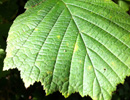




Comments about this page
Fantastic article with amazing photos to help tell the story. I never thought of trees as heritage items, but put into this context, it makes obvious sense.
Add a comment about this page